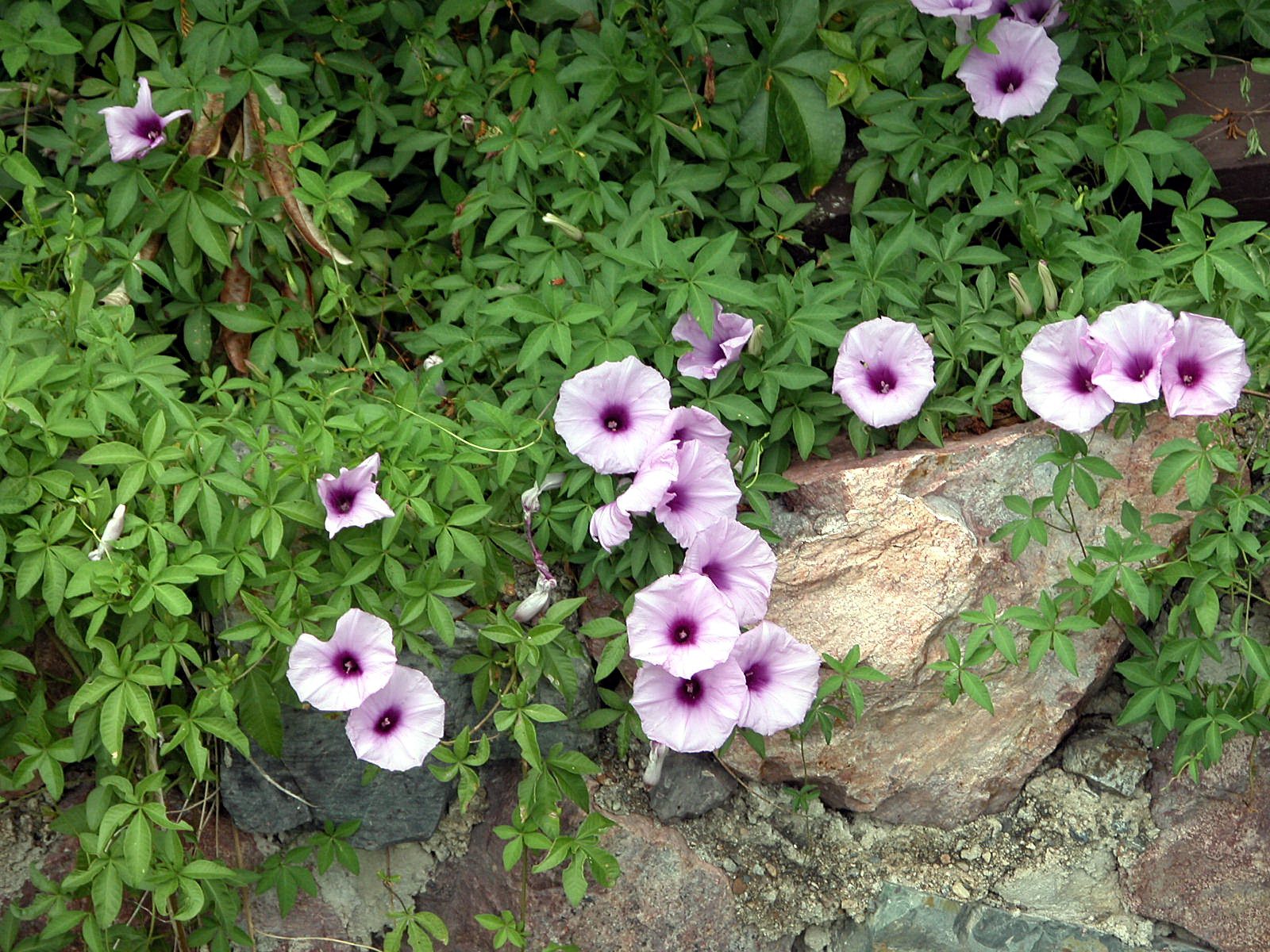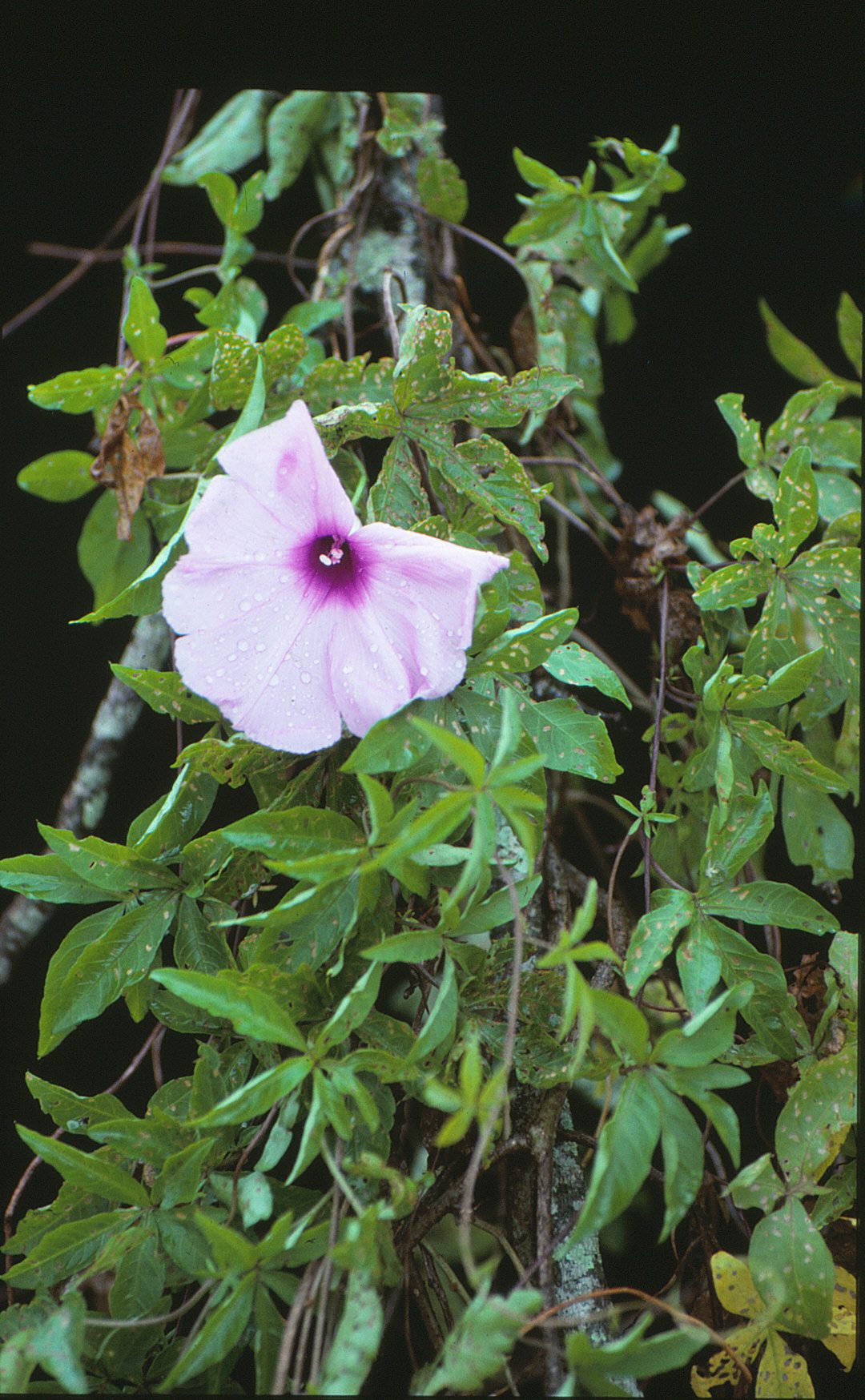Mile-a-minute, coastal morning glory
Ipomoea cairica, Fam. Convolvulaceae


Rampant perennial climber; also runs along the ground rooting at nodes; tuberous roots. Usually very vigorous and climbing all over other plants including canopy of trees and/or trailing across the ground.
| Weed Category: |
Other invasive plants Invasive plants that are not prohibited or restricted invasive plants, but are known to spread readily and cause negative impacts, within the region.
|
| Weed: | Yes |
| Form or habit: | Vine (Climbing, Twining or groundcover) |
| Family: | Convolvulaceae |
| Leaf: | Simple Alternate Alternate simple. Orbicular in outline, deeply palmately divided into 5-7 lance-shaped lobes, up to 50 x 20mm, tapered at both ends, mid-green above, pale green below, stalks 20-60mm long. |
| Flower conspicuous: | Conspicuous |
| Flower colour: |
Purple, Pink, Lilac |
| Flower description: | Funnel-shaped with 5 shallow lobes. Purple or pinkish-lavender with a deeper-coloured throat, 30-80mm diameter, in one or few flowered groups on stems 5-70mm long. |
| Fruit conspicuous: | Conspicuous |
| Fruit colour: |
Brown |
| Fruit: | Dry |
| Fruit description: | Globular, brown papery 10-12mm across with 4 brown hairy seeds, about 4mm long, with tufts of longer white silky hairs on margins. 5 persistent, often petal-like, calyx lobes at the base; usually opening into four and containing 4 somewhat wedge-shaped seeds with rounded backs. |
| Habitat: | |
| Distribution | |
| Food source for: | |
| Toxicity: | |
| Origin: | Native of tropical Africa and Asia |
| Notes: | Spread by: vegetative material and/or seeds in garden waste, water, contaminated soil on machinery, vehicles etc; contaminated pasture seeds and contaminated forest mulch. Invades/threats: agriculture, particularly the sugar-cane industry, grazing and the environment. Notes: a serious environmental weed in this region; smothers native vegetation in coastal areas, often close to mangroves, and creek banks. More than 20 species of Ipomoea occur in this district with 15 of them being native. Only one native species has been identified as being a problem to agriculture so, as always, correct identification is essential. Exotic species that are now widely naturalised were probably all introduced as ornamentals. The hard seeds have a long viability and most perennial species are also spread by vegetative means. The well-known sweet potato is Ipomoea tatatis. |
| Information sources: | Mackay Regional Pest Management Group (2018) Weeds of the Mackay Whitsunday Region Second Edition. |



